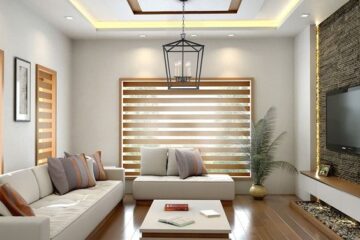
Locals seemed to be happy to see tourists. They smiled and greeted us. Some even stopped by for a small conversation. They wanted to know why we travelled to Pattani, one of the deep-south provinces that have been in the red-alert zone for more than a decade.
“Aren’t you afraid of the unrest situation?” asked a fruit vendor in the municipality fresh market. I would lie if I said no. But she did not wait for the answer, she continued that it was always good to see visitors and gave us a big smile.
It took us about a 90-minute drive from Hat Yai in Songkhla to the city of Pattani. We used highway 43 and passed several checkpoints guarded by soldiers until we reached the city.
Pattani was once an ancient Muslim kingdom covering the area of the present Pattani, Yala and Narathiwat provinces to some states in Malaysia. During the Ayutthaya period, the kingdom was also an international trading post for merchants from Portugal, China, India, Japan, Holland and Britain, according to the Institute of Southern Thai Study. The kingdom also paid tribute to the Ayutthaya kingdom but refused to do so after the rise of Rattanakosin era. King Rama I sent his troops to invade Pattani in the 18th century and divided the kingdom into seven states that later become three provinces. Pattani had its first governor in 1933 during King Rama VII’s reign.
Like other visitors to Pattani, we wanted to see the city icon — Pattani Central Mosque, known as Masjid Klang in the Thai language.
According to the Southern Border Provinces Administrative Centre, the masjid is the largest mosque in the south. It was built in 1954 and took about nine years to be completed.
The architectural beauty makes people compare it to the unique design of Taj Mahal of India. Unlike the ivory-white marble mausoleum, the mosque is painted in orange and vanilla colours with white doors and windows. Its onion domes are painted green topped by a red lotus and bronze ornament decoration. There are two minarets and a large rectangle pond at the front of the building.
Inside the mosque, there is a large prayer room connected to a central prayer hall where a group of men studying Koran.
About 6km east of the Central Mosque lies Masjid Krue Se, the first mosque of Pattani. Built in 1578, the masjid will celebrate its 440th years old in the next two years. Those who visit the mosque might still remember the tragedy in 2004 when 32 people were killed inside.
Some locals believed that the old mosque has been cursed.
“The construction has never been completed. Whenever there was an attempt to renovate the mosque, lightning struck the holy place,” said an old man who walked across the street from his home to talk to us. He said he always came to the mosque to take care of the place.
According to a legend, the unfinished mosque was built by a Chinese migrant named Lim To Khieng who wanted to show his faith to Islam by converting after marrying a noble Muslim woman in a Pattani court. His younger sister, Lim Ko Niao, later sailed from China to persuade her brother to return home to care for their sick mother. But Lim Ko Niao failed the mission. She put a curse on the mosque that it would never be completed before hanging herself from a nearby cashew tree. Her graveyard is located not far from the mosque.
The red brick building is today listed by the Fine Arts Department as a national heritage.
Another unique attraction is Masjid Ba-ngoi La-nga in Ban Khuan Lang Nga in Khok Pho district.
Believed to be built in 1634, the masjid was made of wood without nails and has a two-tier tiled roof.
“The structure looks like a prayer hall of Wat Ban Sai Khao located not far from the mosque,” said Adam Bahaembunga, a village head of Ban Sai Khao.
The old masjid also has a small exhibition to store an old Koran manuscript as well as old items found in the village. There is also a long drum which was once used for calling prayers to the mosque, he said.
The masjid is still in use although there is a new structure — Masjid Najmudin built in 1970 — standing next to the old one.
From the masjid, there is a winding road leading to the top of Khao Rang Kiab mountain. On top of the mountain sits a shining gold-colour seated Buddha image. The name is Phra Buddha Maha Munintha Lokanat, meaning the Buddha whom people take refuge in. The height is 29.8 metres. The late Princess Mother and the late HRH Princess Galyani Vadhana laid the foundation for the Buddha construction in 1971. The work was completed in 2010.
At the foot of the Buddha sculpture, there is a large balcony where visitors can walk around to have panoramic view of the village below.
After the sunset, street food stalls are open at talat to rung (night market) next to the Pattani provincial indoor stadium on Phiphit Road. Choices of food are plenty including beef noodle soup, chicken satay and khao yam (rice served with a selection of raw vegetables and a sweet-and-salty sauce made from preserved fish).
The trip to the south can’t be completed without roti and cha chak (milky tea). Some well-known restaurants for the snack are Ran Bang Nhud on Charoen Pradit Road not far from a roundabout in front of Prince of Songkla University Pattani Campus and Frangipani Garden at CS Pattani Hotel on Nong Chik Road.
The day passed quickly when we had a good time. At least I felt that travelling in Pattani was not as scary as it look from afar.
Pattani Central Mosque is on Yarang Road. It is open daily. Visitors are required to wear long pants or skirts.
Masjid Krue Se is open daily.



[Source:- Bangkok Post]



